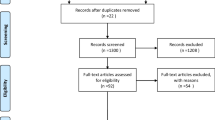Abstract
With the development of global technology and teaching trends, digital technology teaching has become a common phenomenon today. This study uses the virtual reality social skills course to teach ten autistic students for Elementary and Junior High School, with the theme of “One Art Tour with Students” and four key points in the 12-year National Basic Education Curriculum. In virtual reality situational teaching, through t test analysis, it is found that inappropriate social behavior is obviously improved, and environmental adaptability is also greatly improved. Through interviews, parents and teachers believe that children’s social skills have improved. In addition, the research found that some problems must be noticed in the actual teaching process, including (1) black picture in virtual reality; (2) students control the handle controller in the virtual reality; and (3) definition of virtual space. The situations mentioned above should be handled with caution, they may affect the effectiveness of students' learning and involve the safety of the teaching process. These findings are suitable for virtual reality teaching and operation of students with autism, so opinions are provided to the field scholars as a reference.

Similar content being viewed by others
References
DiGennaro RFD, Hyman SR, Hirst JM. Applications of technology to teach social skills to children with autism. Res Autism Spectrum Disord. 2011;5(3):1003–10.
Didehbani N, Allen T, Kandalaft M, Krawczyk D, Chapman S. Virtual reality social cognition training for children with high functioning autism. Comput Hum Behav. 2016;62:703–11.
Falk-Ross F, Iverson M, Gilbert C. Teaching and learning approaches for children with Asperger’s syndrome: literacy implications and applications. Teach Except Child. 2004;36(4):48–55.
Horace HSI, Wong SWL, Chan DFY, Byrne J, Li C, Yuan VSN, Lau KSY, Wong JYW. Enhance emotional and social adaptation skills for children with autism spectrum disorder: a virtual reality enabled approach. Comput Educ. 2018;117:1–15.
Lorenzo G, Lledó A, Pomares J, Roig R. Design and application of an immersive virtual system to enhance emotional skills for children with Autism spectrum disorders. Comput Educ. 2016;98(1):192–205.
Mesa-Gresa P, Gil-Gomez H, Lozano-Quilis JA, Gil-Gomez JA. Effectiveness of virtual reality for children and adolescents with autism spectrum disorder: an evidence-based systematic review. J Sensors. 2018;98(1):63–77.
Matsentidou S, Poullis C. Immersive visualizations in a VR cave environment for the training and enhancement of social skills for children with autism. In: 9th International conference on computer vision theory and applications. New York: Springer; 2014. p. 230–36
Merrell KW, Gimpel GA. Social skills of children and adolescents: conceptualization, assessment, treatment. Mahwah: Lawrence Erlbaum Associates Publishers; 1998.
Meng Y-R. Elementary and junior high school students social skills behavior scale. New Taipei City: Psychological; 2004.
Parsons S, Mitchell P, Leonard A. The use and understanding of virtual environments by adolescents with autistic spectrum disorders. J Autism Dev Disord. 2004;34(4):449–66.
Parsons S, Leonard A, Mitchell P. Virtual environments for social skills training: comments from two adolescents with autistic spectrum disorder. Comput Educ. 2006;47:186–206.
Special Education Information Network. Special education statistics inquiry, last accessed 2016/11/21. Last accessed 2019/1/21. Date of declaration 2016.
Tzanavari A, Charalambous-Darden N, Herakleous K, Poullis C. Effectiveness of an immersive virtual environment (CAVE) for teaching pedestrian crossing to children with PDD-NOS. In: 15th IEEE international conference on advanced learning technologies (Icalt 2015). 2015. p. 423–27.
Wu YY. Autistic Spectrum Disorder, ASD. Taiwanese Society of Child and Adolescent Psychiatry. Health Education. http://www.tscap.org.tw/TW/NewsColumn/ugC_News_Detail.asp?hidNewsCatID=7&hidNewsID=129. 2016. Accessed 24 Dec 2018.
Acknowledgements
This research was supported by the Ministry of Science and Technology (MOST) (MOST 109-2511-H-007-009- MY1). The name of the project is “A study related to the effectiveness of constructing and applying Virtual Reality Teaching System to the social skill training for students with autism”.
Funding
This study was funded by Ministry of Science and Technology, Taiwan (MOST 109-2511-H-007-009-MY1).
Author information
Authors and Affiliations
Corresponding author
Ethics declarations
Conflict of interest
The authors declare that they have no conflict of interest.
Additional information
Publisher's Note
Springer Nature remains neutral with regard to jurisdictional claims in published maps and institutional affiliations.
This article is part of the topical collection “Applications of Cloud Computing, Data Analytics and Building Secure Networks” guest edited by Rajnish Sharma, Pao-Ann Hsiung and Sagar Juneja.
Rights and permissions
About this article
Cite this article
Meng, YR., Yeh, CC. Exploring the Social Interaction of Autistic Students of Elementary and Junior High School Students Through the Teaching of Social Skills and Learning Process in Virtual Reality. SN COMPUT. SCI. 3, 55 (2022). https://doi.org/10.1007/s42979-021-00914-z
Received:
Accepted:
Published:
DOI: https://doi.org/10.1007/s42979-021-00914-z




